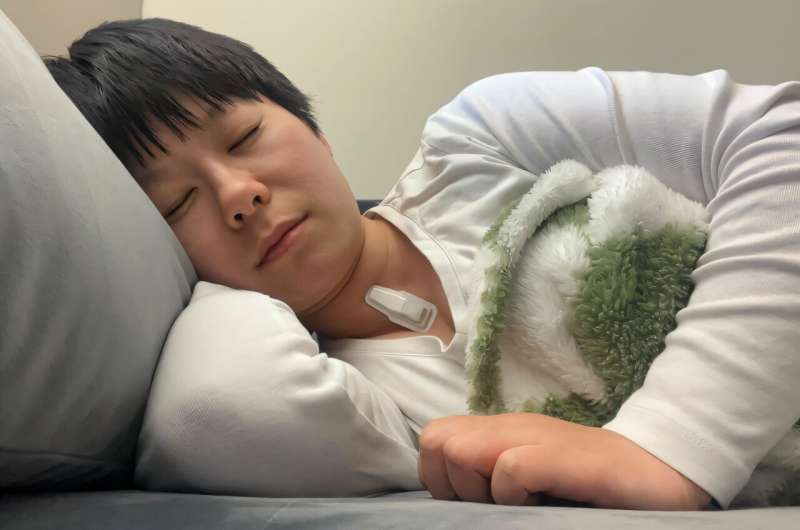Developed by scientists led by John A. Rogers, Ph.D., the Louis Simpson and Kimberly Querrey Professor of Materials Science and Engineering, Biomedical Engineering and Neurological Surgery, the novel device can classify different sleep stages—awake, non-rapid eye movement and rapid eye movement (REM)—as well as capture one’s sleep patterns and identify the effects of sleep apnea from a patient’s own home.
“What we wanted to do was create a simple, wearable device that would bridge the gap between what one can do with established sleep trackers on the wrist or the finger with what’s done in a hospital-based sleep laboratory,” said Rogers, who is also a professor of Dermatology and founding director of Northwestern’s Querrey Simpson Institute for Bioelectronics. Andreas Tzavelis, a student in the Medical Scientist Training Program (MSTP), was a co-author of the study.

